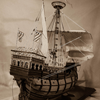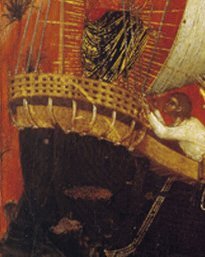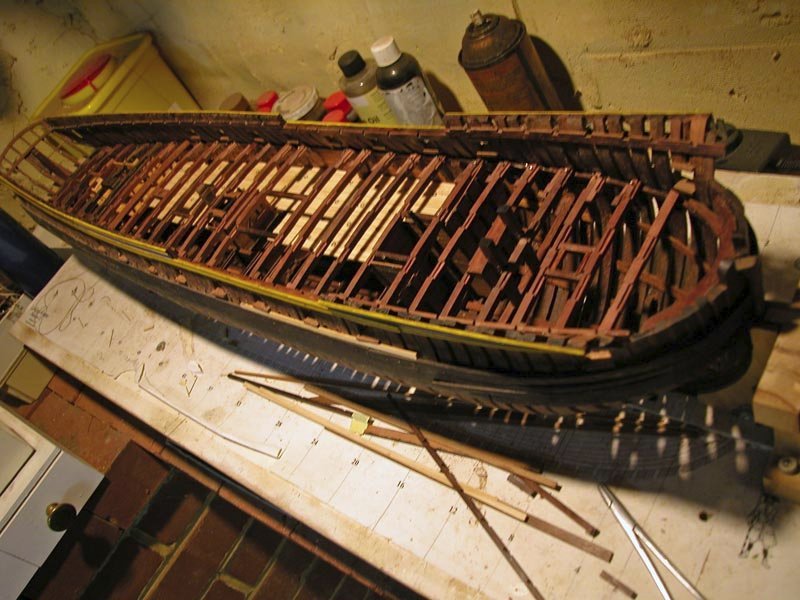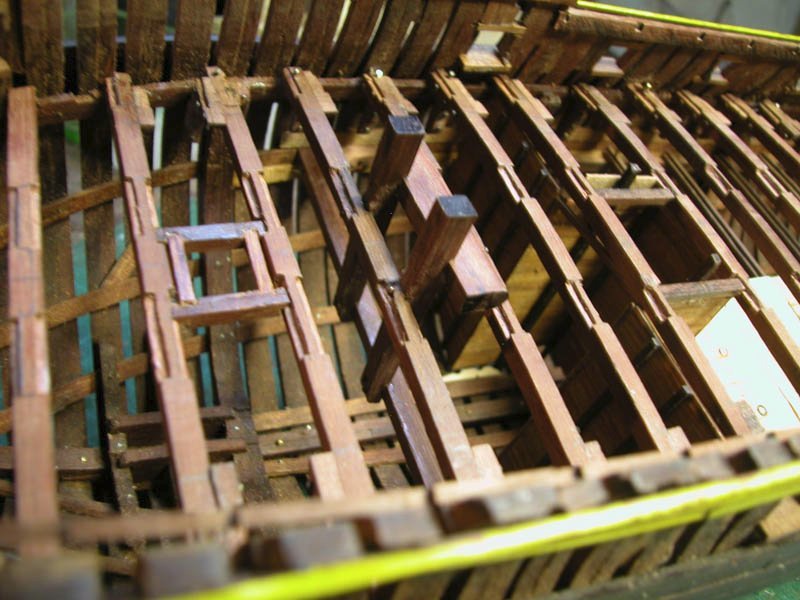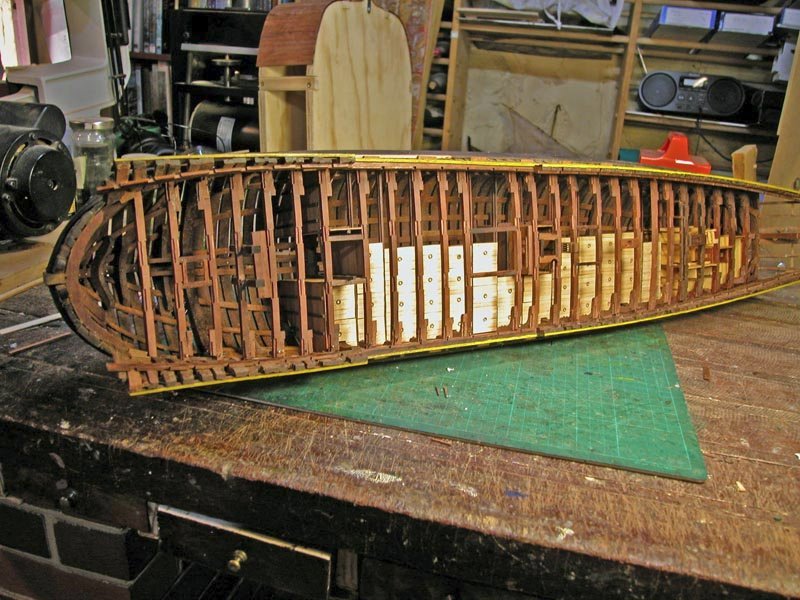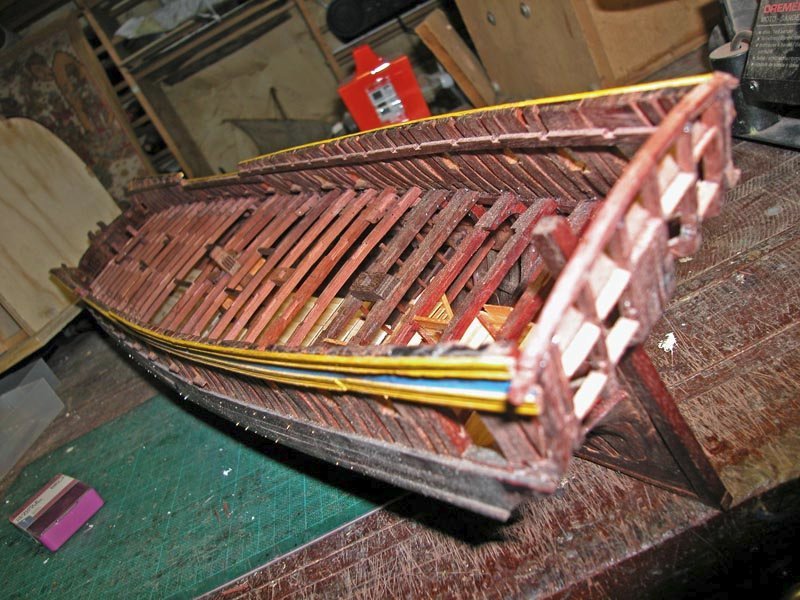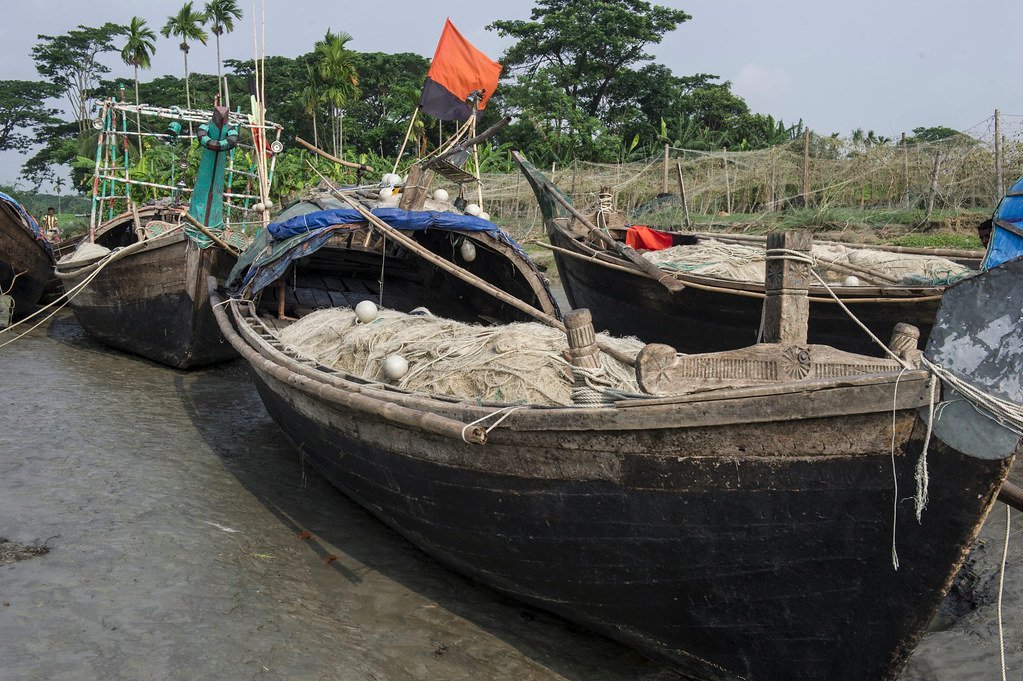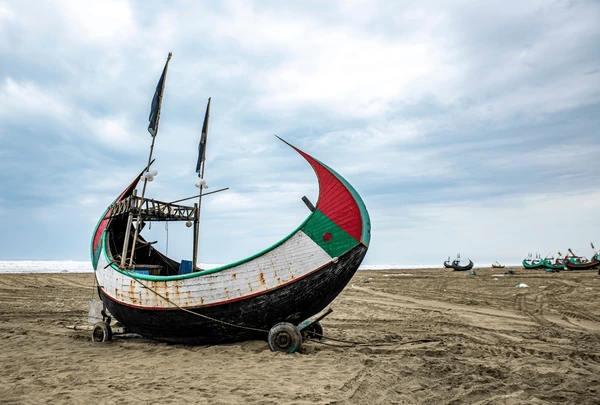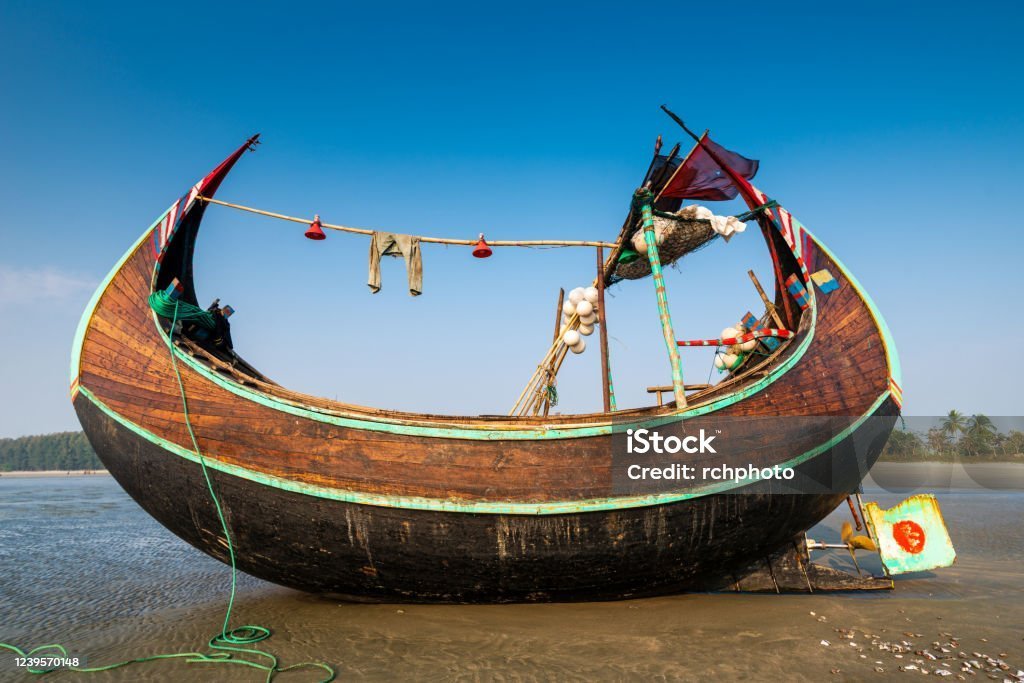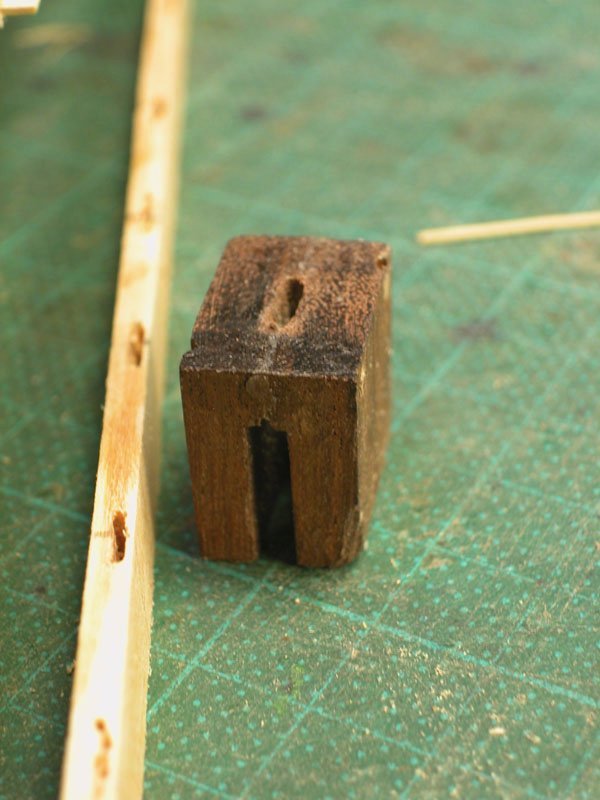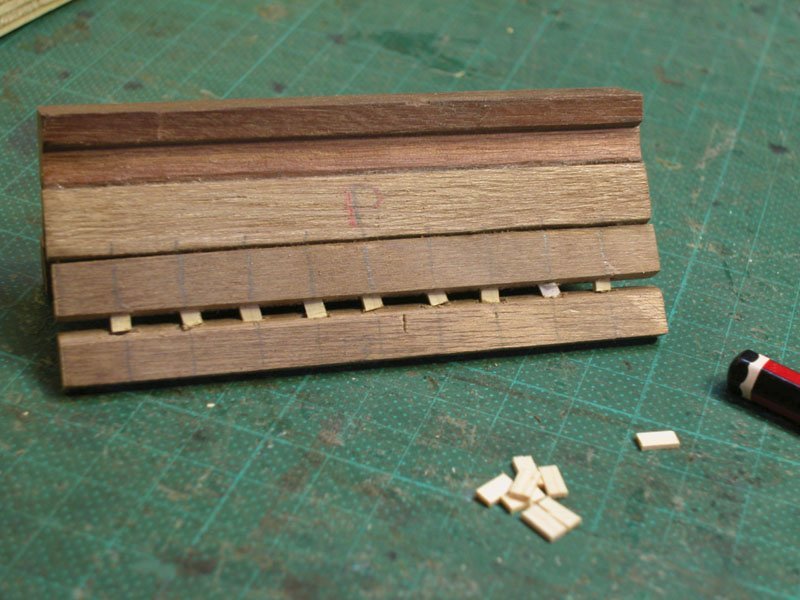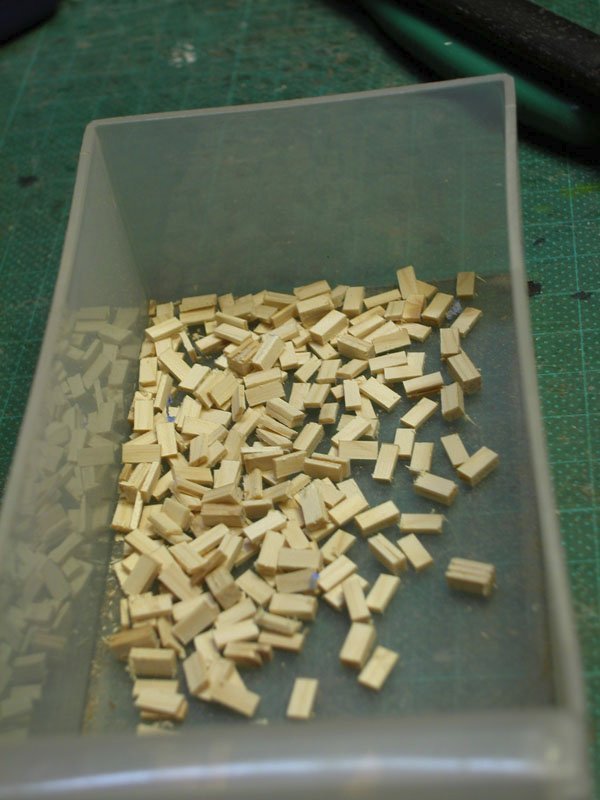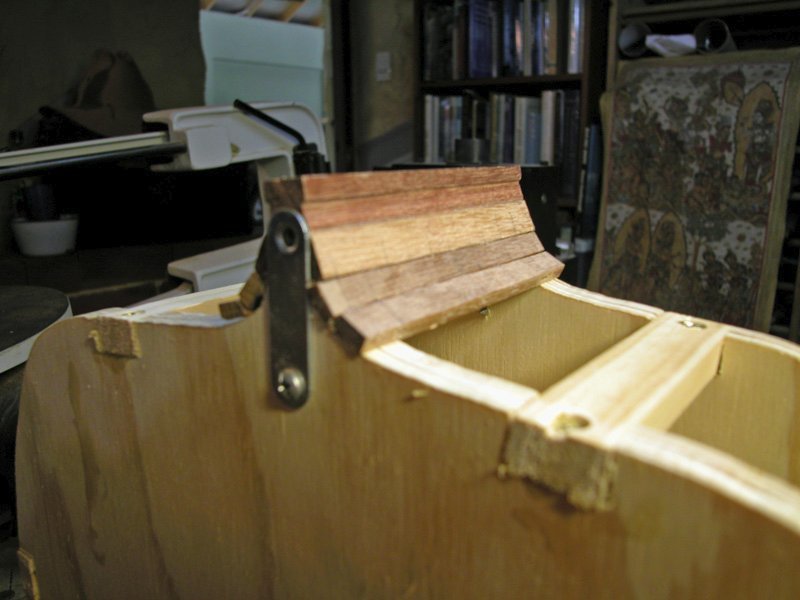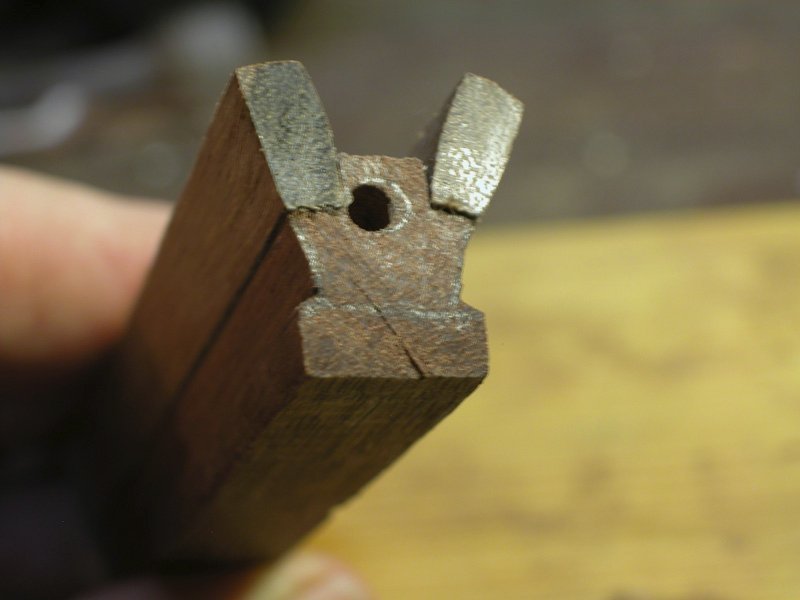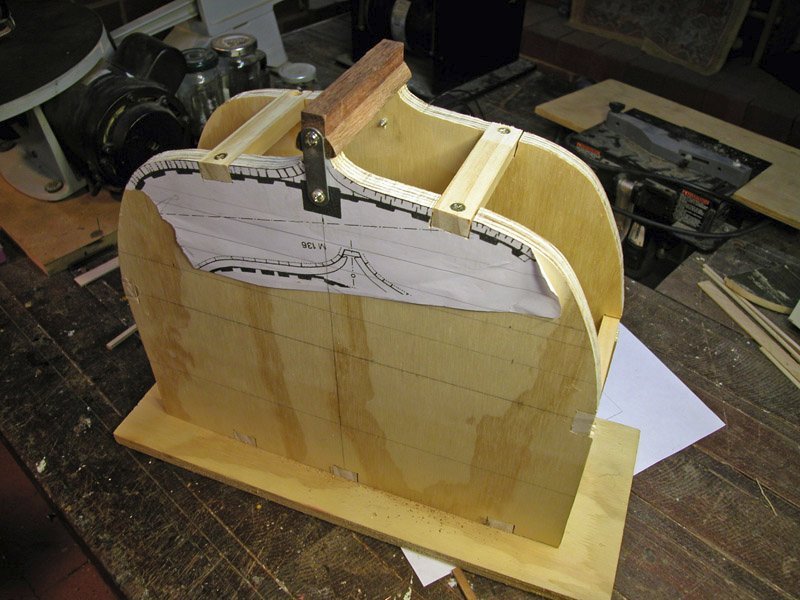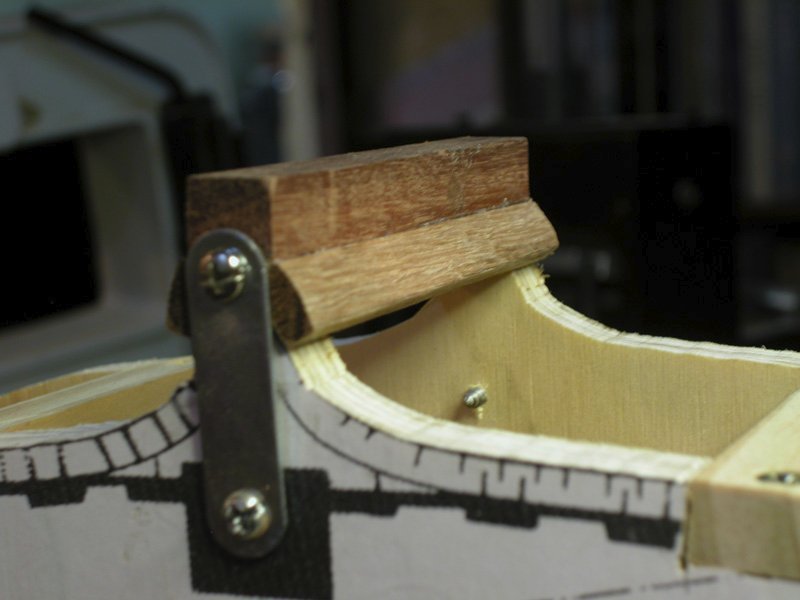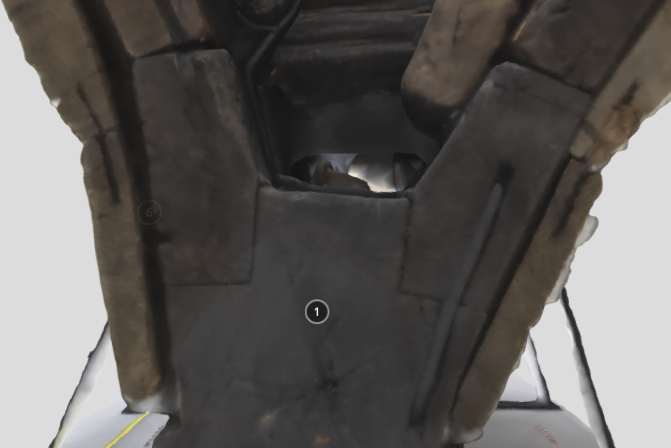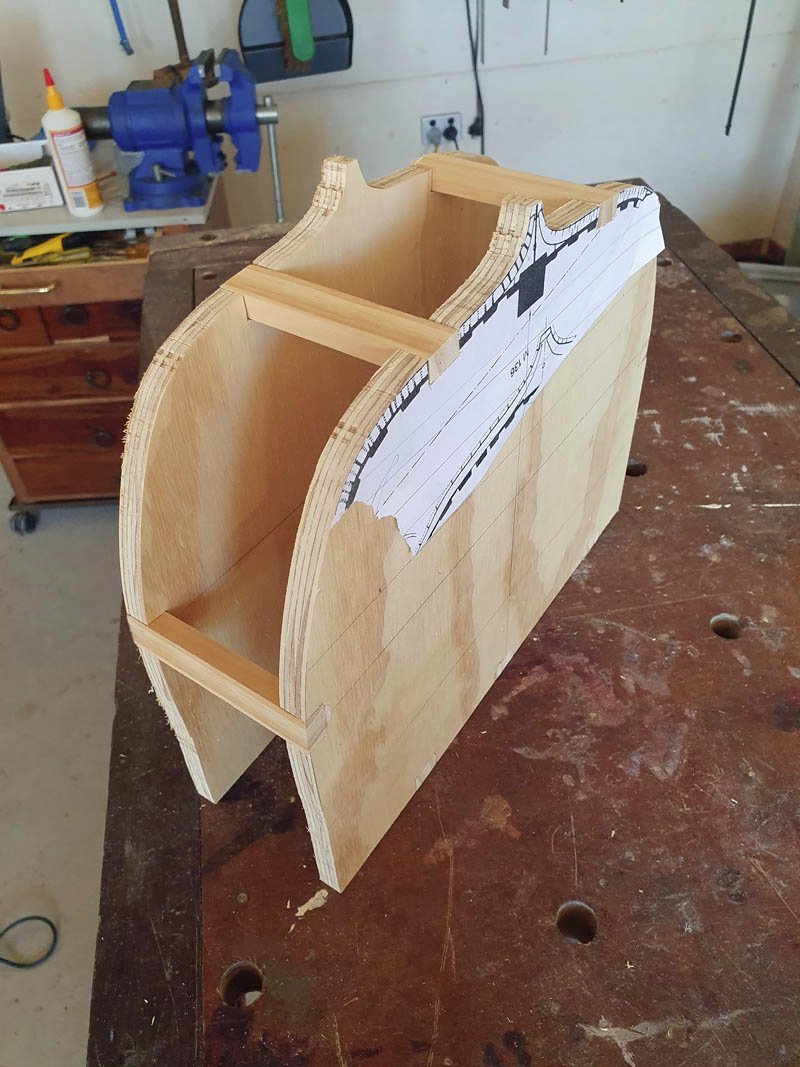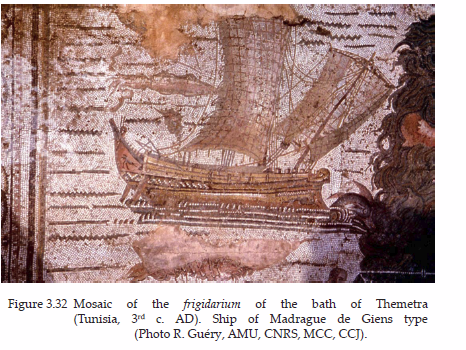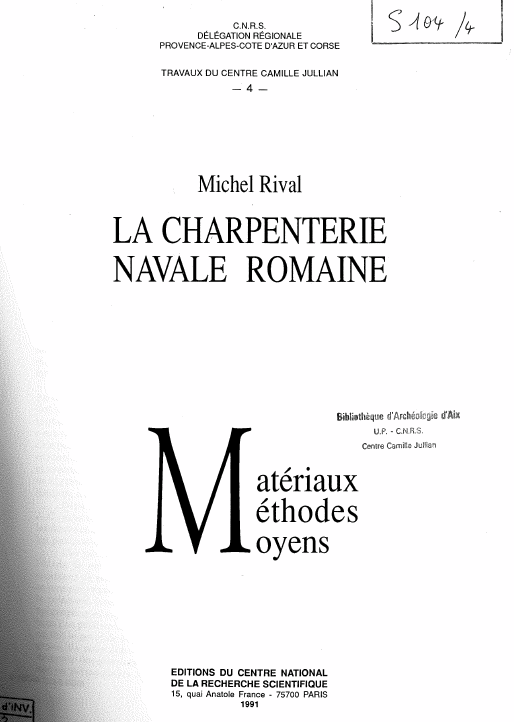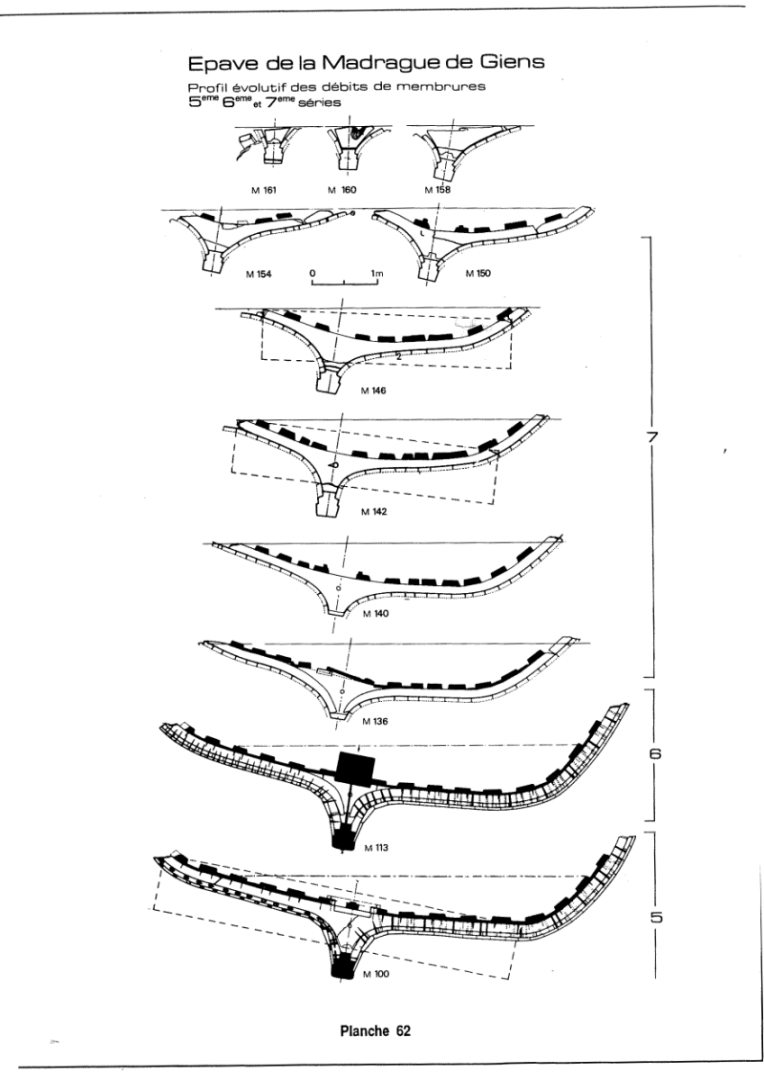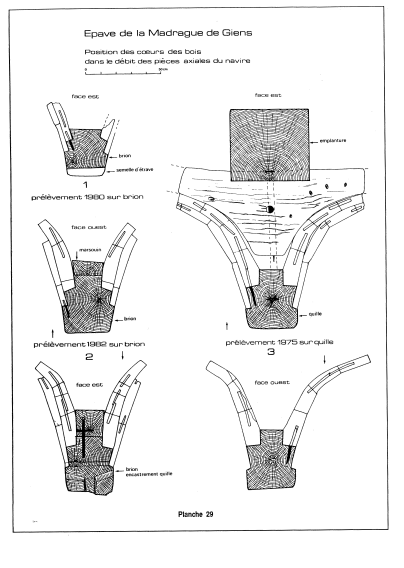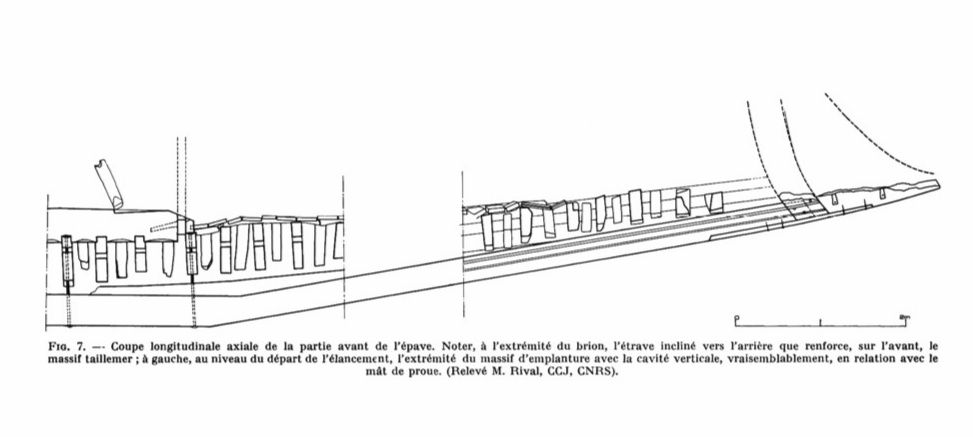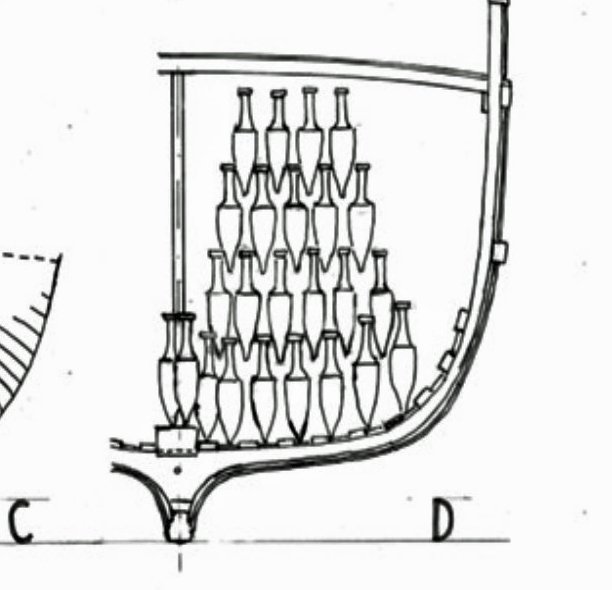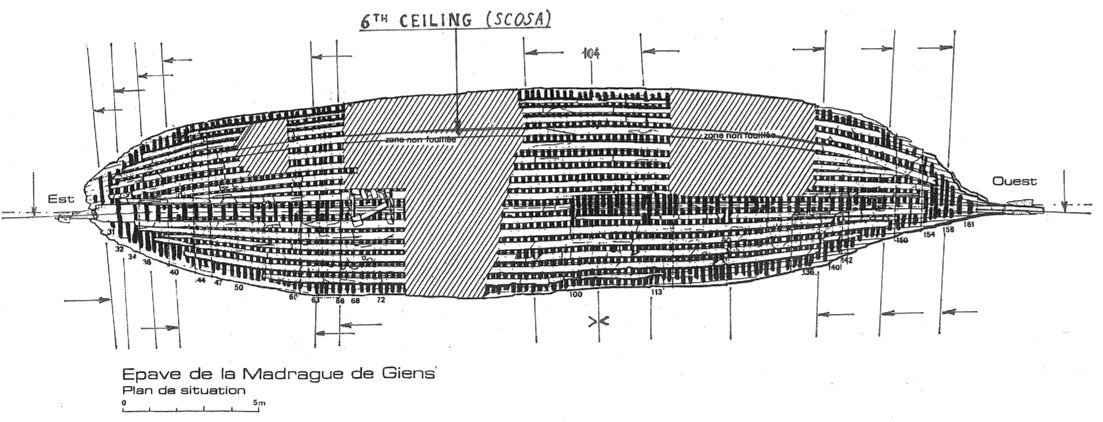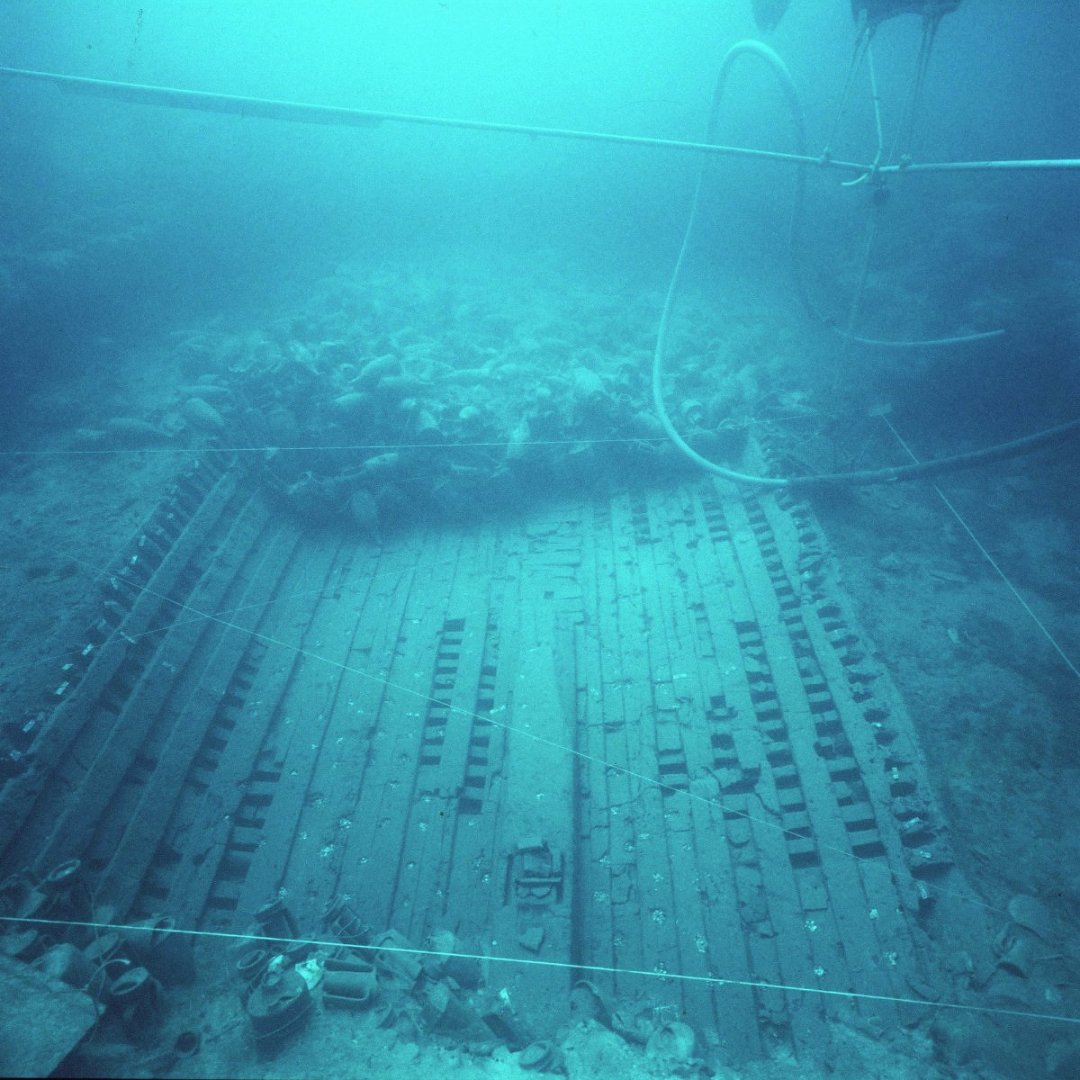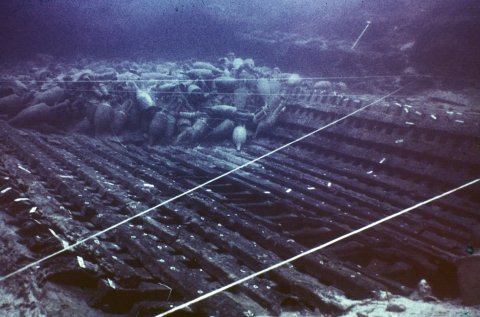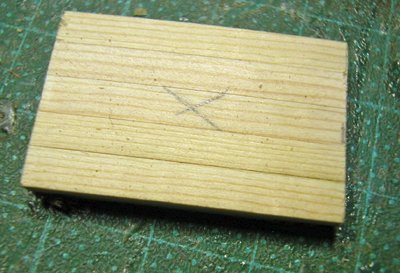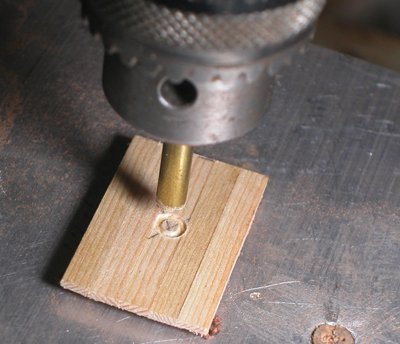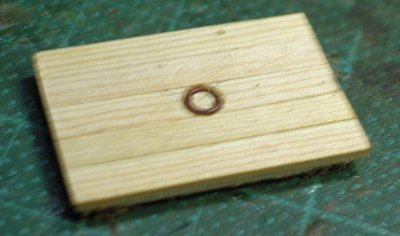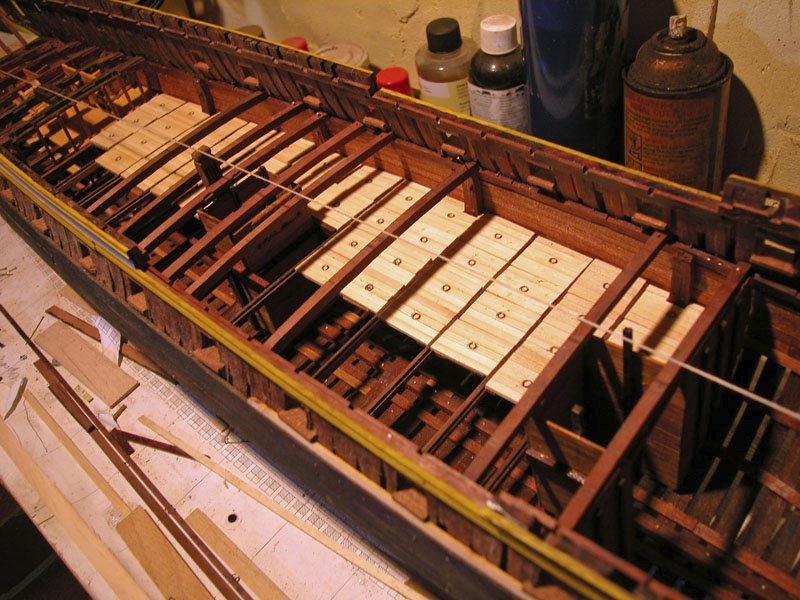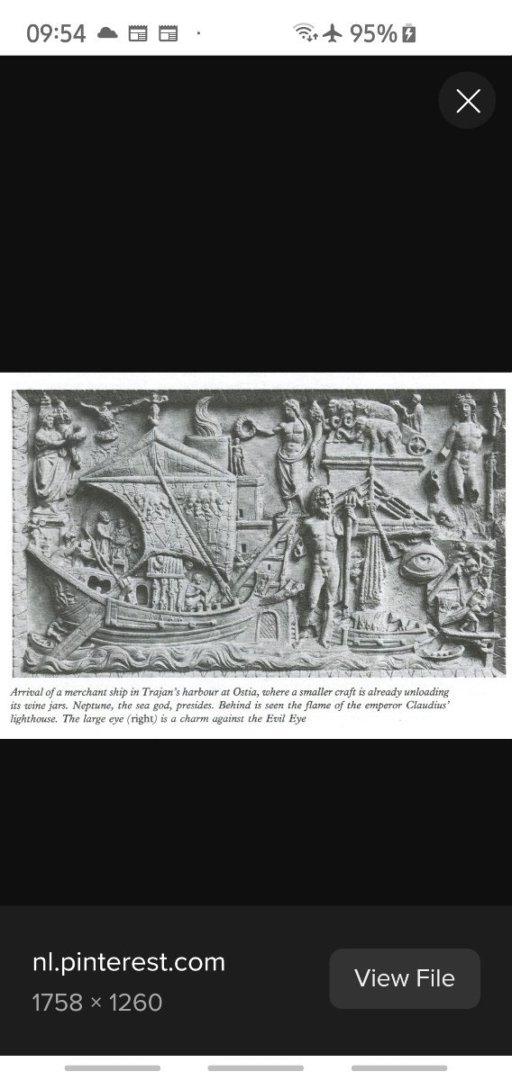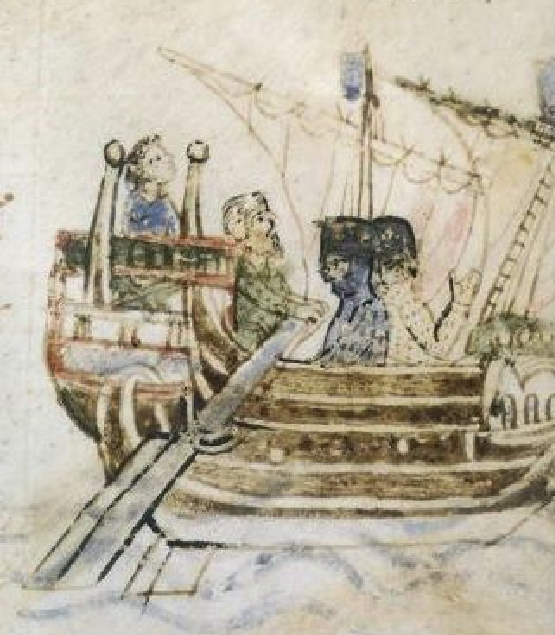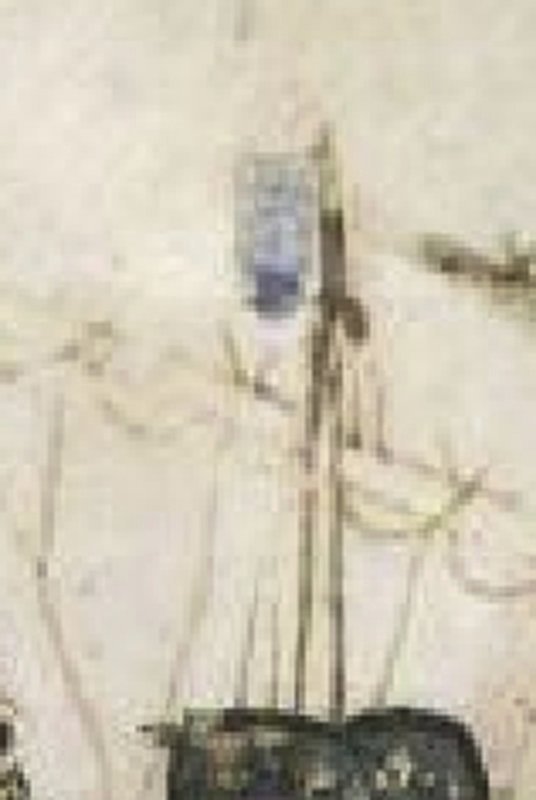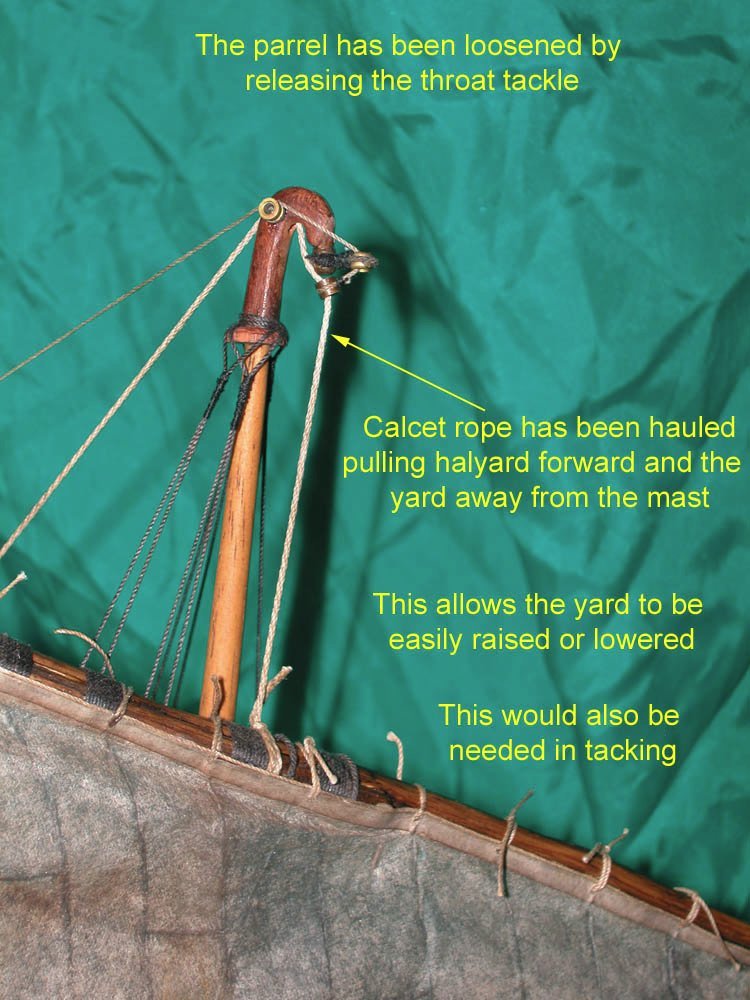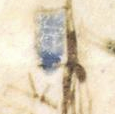-
Posts
835 -
Joined
-
Last visited
Content Type
Profiles
Forums
Gallery
Events
Everything posted by woodrat
-
This painting of the stern of Venezianos nave shows somewhat less substantial supports for the stern castle than yours but of course it doesnt project as much as yours either. Dick
- 508 replies
-
There is no doubt that loading ports on at least one side were used and are seen in a number of illustrations for example St Marks coffin being loaded through such a port. As Roger states, it would be ridiculous to set sail with a crenellated hull. I believe the artists sketched thes e ships in port so while loading. At sea the port would be covered to restore freeboard. I took this into account on my round ship reconstruction by building in removable panels which could be rapidly removed and replaced. I used Lillian Ray Martins book extensively as an excellent albeit fallible resource. Dick
- 508 replies
-
I agree with Baker. That black could be toned down with a light buffing, Here are some bangladeshi boats to show effects of wear on pitch, Dick
- 508 replies
-
The open area contained by the "brace" probably obviates the need for a hawse hole (not seen on the mosaic), do you think? There is a bitt here which would serve. The mosaic also suggests that the "brace" and the curved stempost is rabbeted. Does this suggest that at times this area might be planked in as an anti splash cover?🤔 Dick
- 508 replies
-
To drill out the mortices you have to have a decent width of plank or you cant do it. Hence the large scale. This next is from my mycenaean build and I used a jig to do the mortices. But now I do them freehand. I can see why slaves were so prized in the ancient world. This type of repetitive, boring job would be given to them. Also the making of pegs.🥱 Cheers Dick
- 30 replies
-
- roman
- merchantman
-
(and 2 more)
Tagged with:
-
The keel is jarrah. The planking is a hardwood and I think its meranti. Here is the first attempt at mortice and tenon Pine tenons. I have fixed all planks with mortice amd tenonand will peg them later. Pegged mortice and tenon carvel planking had been in use in the Mediterranean since the Bronze Age (see jmy mycenaean war galley build).
- 30 replies
-
- roman
- merchantman
-
(and 2 more)
Tagged with:
-
A closeup of the keel section, showing the two keel rabbets. The outer rabbet is for the thinner sacrificial outer planking, The inner is for the thicker inner strakes. Dick
- 30 replies
-
- roman
- merchantman
-
(and 2 more)
Tagged with:
-
- 30 replies
-
- roman
- merchantman
-
(and 2 more)
Tagged with:
-
Bit unfair to non Aussies. We are referencing an obscure but iconic australian comedy movie called "The Castle". It's mostly about the Vibe. The next step is to carve the rabbet for the garboard strake. But the garboard is not a simple plank, it's a carved polygonal plank and is vital for producing the "wine-glass shape of the hellenistic merchantmen. image from sketchfab Dick
- 30 replies
-
- roman
- merchantman
-
(and 2 more)
Tagged with:
-
I have knocked up a mid hull mould to which the keel section will attached. This will also incorporate the mast-step eventually. Dick
- 30 replies
-
- roman
- merchantman
-
(and 2 more)
Tagged with:
-
I have received some more detailed drawings by kind courtesy of Dr Pierre Poveda . The drawings are extracted from M. Rival : La Charpenterie Navale Romaine The following are excavated sections of the vessels bottom Further detail of the keel showing the double planking and floors For an idea of what the ship lloked like, it is thought that this mosaic of a very similar merchantman from Themetra in Tunisia is as good as it gets, Cheers Dick
- 30 replies
-
- roman
- merchantman
-
(and 2 more)
Tagged with:
-
In this case I am standing on the shoulders of several decades of meticulous excavation and documentation by french archaeologists and aided by photogrammetric reconstructions to enable a credible idea of the hull shape.I claim no originality but am just doing a model in wood of what has already been done virtually. Laetitia Cavassa,PierrePoveda,VincentDumas,NinonBasuau,PhilippeSoubias.TheMadraguede Giens ship:Aphotogrammetryfromthepast:Completingthestudyofanexceptionalromanwreck. Under theMediterraneanII,UniversityofMalta;HonorFrostFoundation,Nov2022,LaValette, Malta. halshs-04015726 Dick
- 30 replies
-
- roman
- merchantman
-
(and 2 more)
Tagged with:
-
There are many constructional peculiarities in this vessel which make it differ from later vessels. Having just had 3 weeks travelling I have had time to think. I have concluded that, in order to understand and demonstrate these peculiarities, it would be advantageous to construct a cross-sectional model. Otherwise it would just be another roman ship model. There is enough excellent excavation data to allow this. Dick
- 30 replies
-
- roman
- merchantman
-
(and 2 more)
Tagged with:
-
I should refer you to my recent build of a mycenaean galley (link below) built shell first and carvel as was the Uluburun ship. And this was in the Bronze Age! There is nothing new under the sun! Dick
- 30 replies
-
- roman
- merchantman
-
(and 2 more)
Tagged with:
-
The more deeply I delve into this , the tougher it gets. Not only was the original Roman vessel built shell-first but it was double planked externally. The framing was inserted after the completion of the shell. As to the hull shape, this has been a matter of academic spleen since it was excavated and remains controversial. Millenia on the sea bed with hundreds of amphorae pressing down have provided some interesting distortions I'm sure. Even so, below the turn of the bilge there was good preservation and the backbone is all there. So it seems that I should start with the quite complicated keel and stern post. Did the romans use any moulds to aid their planking, I dont know. Your guess is as good as mine. Cheers Dick
- 30 replies
-
- roman
- merchantman
-
(and 2 more)
Tagged with:
-
Zackly. Which is why, when I hear the term "replica" applied to ancient and mediaeval vessels and to paraphrase Fat Herman, I reach for my gun. We, after all, are only making hobby models, so a little slack can be cut for us. Let us not get too precious. Cheers😎 Dick
- 508 replies
-
I have commenced researching this famous roman shipwreck. It was discovered off the coast of Toulon in 1967 at a depth of about 20 metres. The hull was largely intact, sufficiently so for reasonably reliable reconstruction to be made of its lines. It appears to be a very large merchantman of about 400 tons with a length of about 40 metres. At the time of its demise in the middle of the first century BCE it was carrying a cargo of wine in amphorae and glazed pottery. The cargo has protected the hull timbers. Excavations led by Andre Tchernia and later by Patrice Pomey of the Centre National de la Recherche Scientifique have revealed one the best preserved shipwrecks of the ancient mediterranean world and have made it a suitable subject for a detailed model. I hope to proceed much along the same method as I used for my venetian round ship reconstruction. Wish me luck! Cheers Dick
- 30 replies
-
- roman
- merchantman
-
(and 2 more)
Tagged with:
-
The port side of the false deck has been fitted. This consists of rectangular floors fitted between rebated cross-beams. Each floor has a central recessed lifting ring. This false deck was meant to accommodate additional passengers such as scientists, artists etc in what was a cargo carrying vessel. The deck is meant to be temporary and would be removed after the completion of the voyage. The pictures are self explanatory. Cheers Dick
-
This one. You can see how a mosaicist with little nautical knowledge would mistakenly think that the rudder went through the hull but is actually encased beside the hull. Dick
- 508 replies
-
I'm sorry Steven, but I feel I should put an oar into the water here. I think it would be an error to put your quarter rudders through the hull just to prove it could be done. Having oblique rudders makes no sense and would detract from an otherwise excellent model. Have a look at the Ostia ship as a solution. There, I've said it.🙂 Dick
- 508 replies
-
This vessel is of an era preceding the use of the large athwartship transom timber at the stern to support the sterncastle. In its absence, it will be necessary to insert curved support timbers which are seen in many of your illustrations. Dick
- 508 replies
-
This image is not detailed enough to be sure, but that sure looks like a "hockey stick" poking out the front of the mast . Above it is a smaller mast with a crows nest behind it. I have seen this image before but dont have a large version of it. Can you give me the reference? In my opinion the hockey stick was only used to pull the yard away from the mast to enable lowering as I tried to show in my Yenikapi 12I I have just found a more detailed pic which looks even more hockey stick like Cheers Dick
- 508 replies
About us
Modelshipworld - Advancing Ship Modeling through Research
SSL Secured
Your security is important for us so this Website is SSL-Secured
NRG Mailing Address
Nautical Research Guild
237 South Lincoln Street
Westmont IL, 60559-1917
Model Ship World ® and the MSW logo are Registered Trademarks, and belong to the Nautical Research Guild (United States Patent and Trademark Office: No. 6,929,264 & No. 6,929,274, registered Dec. 20, 2022)
Helpful Links
About the NRG
If you enjoy building ship models that are historically accurate as well as beautiful, then The Nautical Research Guild (NRG) is just right for you.
The Guild is a non-profit educational organization whose mission is to “Advance Ship Modeling Through Research”. We provide support to our members in their efforts to raise the quality of their model ships.
The Nautical Research Guild has published our world-renowned quarterly magazine, The Nautical Research Journal, since 1955. The pages of the Journal are full of articles by accomplished ship modelers who show you how they create those exquisite details on their models, and by maritime historians who show you the correct details to build. The Journal is available in both print and digital editions. Go to the NRG web site (www.thenrg.org) to download a complimentary digital copy of the Journal. The NRG also publishes plan sets, books and compilations of back issues of the Journal and the former Ships in Scale and Model Ship Builder magazines.


